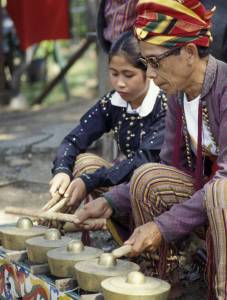Our intangible cultural heritage (ICH) is constantly recreated by its bearers, and experts claim that no two manifestations of one and the same practice or expression are ever totally identical. Elements of the ICH continuously evolve, from manifestation to manifestation and while being transmitted from person to person and from generation to generation. The viability of intangible heritage practices relies on the ongoing transmission of the special knowledge and skills that are essential for their enactment or embodiment.
Safeguarding ICH means ensuring its viability among today’s generations and its continued transmission to tomorrow’s. Communities and groups of practitioners and other tradition bearers everywhere in the world have developed their own systems for transmitting their knowledge and skills, which more often than not depend – or, unfortunately, depended - on orality rather than on written texts.

© R.S. Rastrollo
Threats to the transmission of this living heritage come from such factors as social and demographic changes that reduce intergenerational contacts, for instance from migrations and urbanisation that often remove people from their knowledgeable elders, from the imposition of formal education systems that devalue traditional knowledge and skills, or from intrusive mass media. The response to such threats must come from the communities and groups concerned, assisted by local organizations, their governments and the international community as represented in the General Assembly of States Parties to the 2003 Convention for the Safeguarding of the ICH.
UNESCO’s efforts are aimed at assisting States wishing to strengthen existing transmission systems within communities, or to complement these with formal or non-formal education programmes teaching skills and knowledge to other, usually younger, community members.